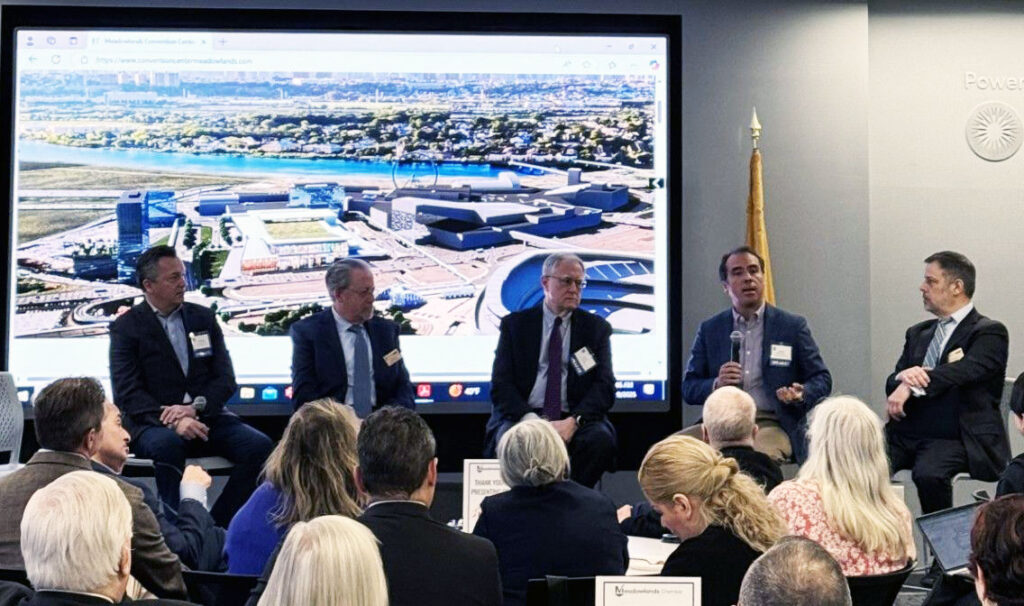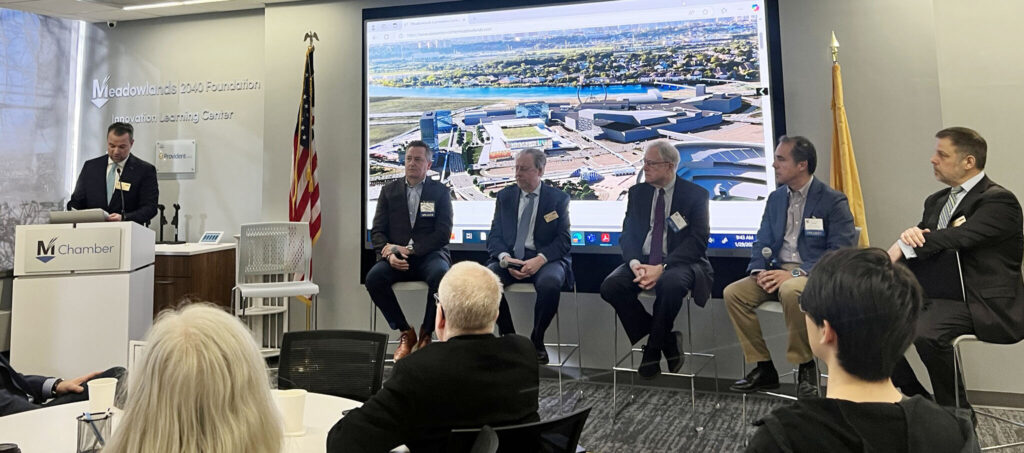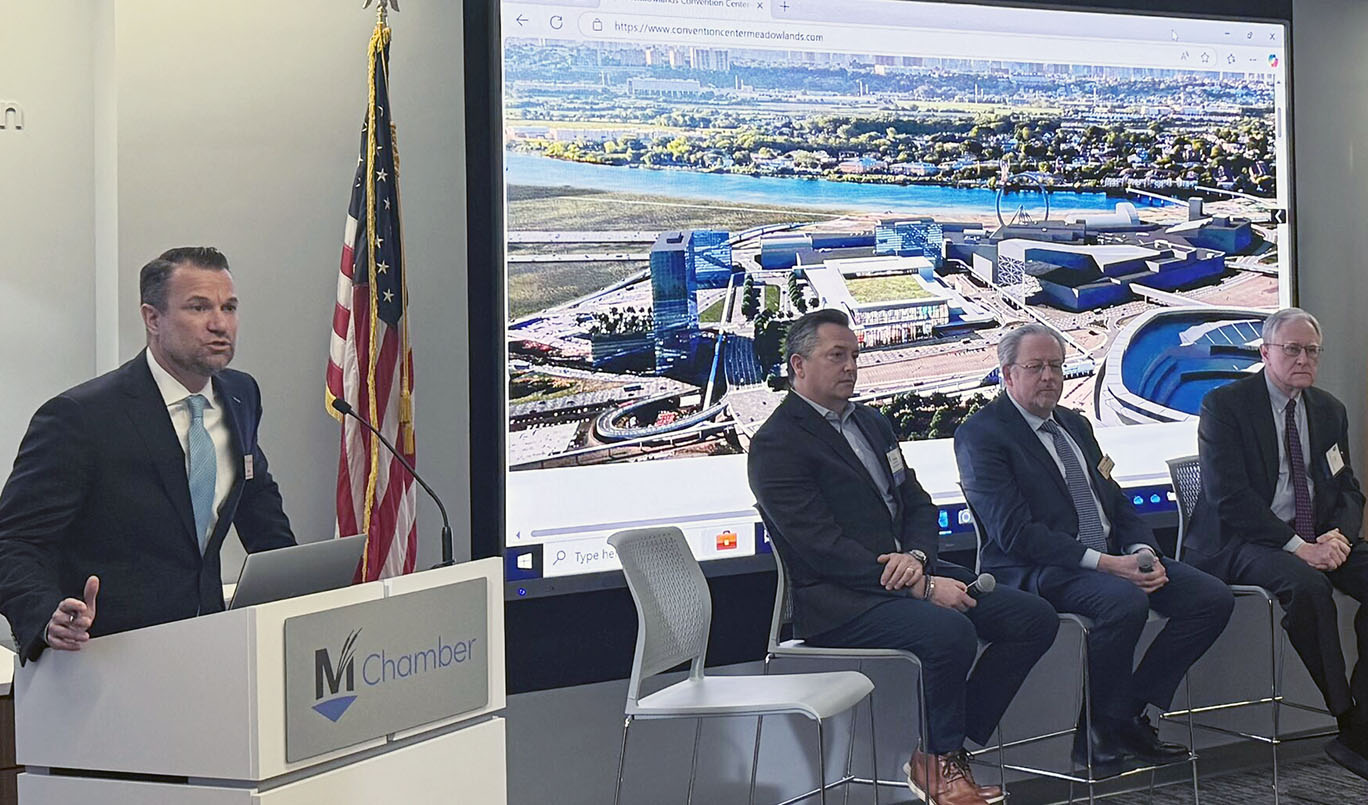The Meadowlands Chamber (MC) hosted its quarterly Eggs and Issues event at its headquarters at 1099 Wall Street West in Lyndhurst, New Jersey. The standing-room-only discussion featured two panels of experts leading interactive talks on the evolving regulatory framework and major policy initiatives that are shaping affordable housing and future development.

Panel 1: Affordable Housing Responsibilities and Opportunities
Moderated by Ron Simoncini, President of Axiom Communications, the discussion focused on the new requirements handed down for affordable housing by the New Jersey Department of Community Affairs (DCA) .
As required by legislation adopted last year, which formally abolished the Council on Affordable Housing (COAH), the DCA released its calculations of each of New Jersey’s 564 municipality’s affordable housing obligations for the “fourth round” of compliance. DCA Director Keith Henderson was in attendance to answer questions and explain the methodology.

Rutherford Mayor Frank Nunziato called the new obligations handed down to municipalities unsustainable and unreasonable. He pointed to how Rutherford is required to construct 600 units of affordable housing on a playing field for a school; he refused.
Gerard Pizzillo, Genova Burns partner and commercial real estate specialist, offered insights for navigating affordable housing obligations while also spotting growth opportunities. He explained that municipalities are constitutionally obligated to provide affordable housing.
He also touched on the calculation of obligations for each town, which Rutherford Councilman John Errico and RCM Ceberio President Bob Ceberio delved deeper into. Errico and Ceberio described how land availability, funding, the economic health of the town, and more went into determining the obligatory housing construction for each municipality.
They also brought up how towns may attempt to counter-propose obligations and continue to meet their constitutional responsibility of providing affordable housing by making concrete plans for their own propositions.
Debra Tantleff, chair of the New Jersey Builders Association and founding principal of Jersey City-based TANTUM Real Estate, said the industry recognized the infeasibility of municipalities to meet DCA requirements. She described legislation that defended the calculations for housing obligations by towns and also attempted to make it easier to reach these obligations, but acknowledged the value in communications between the DCA, municipalities, and development firms.
Panel 2: Impact of NJDEP’s NJ Pact / REAL Regulations
Moderated by Tim White of River Crossing Strategy Group, the second panel discussions focused on new regulations introduced by the NJ Department of Environmental Protection that experts say will significantly impact land use:
- ◾ New Jersey Protecting Against Climate Threats (NJPACT)
- ◾ Resilient Environments & Landscapes (REAL)

Jay Rhatican, Vice President of Land Use and Development, Assistant General Counsel at Hartz Mountain Industries, said the regulations make new housing construction projects almost impossible, especially in tidal or fluvial zones.
Bill Sullivan, Environmental, Land Use and Redevelopment Attorney at ScarinciHollenbeck, pointed to the issue of insurance companies pushing for greater safety regulation to prevent damages, stating, “we cannot regulate our way out of this problem.”
Christopher Minks, Esq., Executive Vice President and Chief Legal Officer for Russo Development, LLC, explained this further, stating new regulations combined with reduced redemptions renders most of the undeveloped land in New Jersey unfeasible for construction while also discouraging businesses from moving into New Jersey. In addition, the shift from permit by rules to permit by registration meant that the number of firms looking for permits from the Department of Environmental Protection would explode.

Anthony Castillo, SESI Consulting Engineer, the only engineer on the panel, approached the issue of DEP regulations from a more technical perspective. He described how the need to adhere to regulations without exemptions for redevelopment would increase the costs of housing construction significantly. The mechanical difficulties of complying with some of the rules were also very apparent, such as the FEMA+6 rule for flood insurance rates, he said.
Dennis Toft, Chair of Chiesa Shahinian & Giantomasi Law’s Environmental Group, pointed out how FEMA may soon not exist anyways given President Trump’s stated intention of dissolving the organization.
ESA attended a discussion on emerging issues for land use, commercial real estate, and redevelopment professionals at the Meadowlands Chamber this week. New flood hazard regulations set to take effect this summer, along with new fair housing rules, rising costs, and restrictions on areas of redevelopment are just some of the challenges influencing the industry in 2025 and beyond.
About the Meadowlands Chamber
The MC has a 50-year history of being a strong advocate for the regional economy and frequently engages government agencies creating public policies. We have supported many environmental protection initiatives as well as sustainability programs.
The MC hosts a variety of events, all listed on the Chamber calendar, posted on social media, and sent to members via flyers and our weekly MeadowlandsMedia.com newsletter. We have monthly networking gatherings, specialty events, quarterly Eggs & Issues, an annual gala, a competitive corporate golf challenge on a PGA course, and much more













